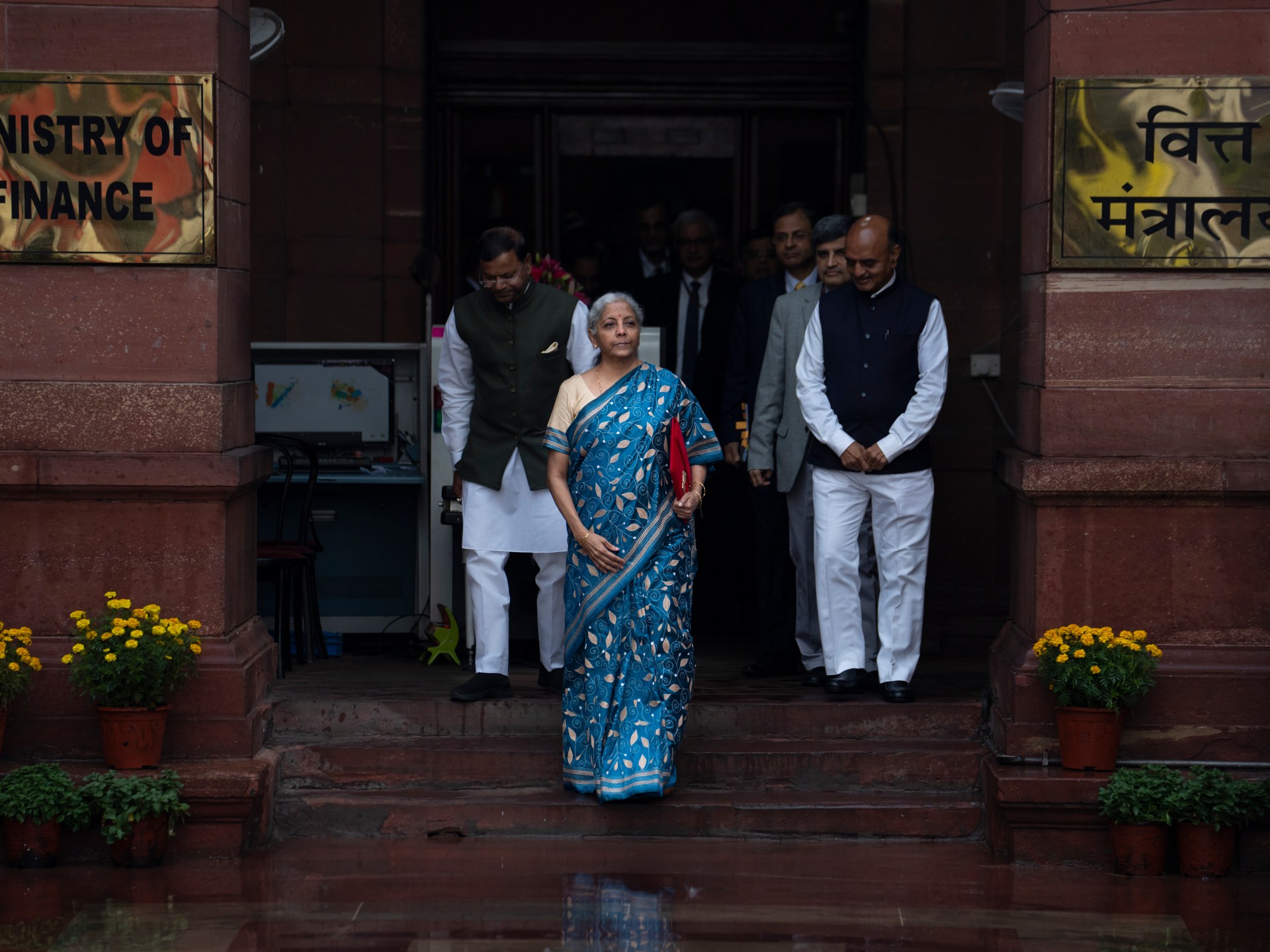
India’s 2024 budget: What does it say about the economy, elections? | Business and Economy News
- Politics
- February 1, 2024
- No Comment
- 124
With national elections around the corner, the Indian government on Thursday announced an interim budget mostly along expected lines, with a few surprises rolled in both for investors and rural voters.
The world’s fifth-largest economy, and its most populous nation, will vote between March and May to choose its next federal government. The final budget before the national vote is often the last chance for an incumbent administration to shower voters with promises and projects.
Yet, while the budget announced by Indian Finance Minister Nirmala Sitharaman includes references to key segments of voters who will be critical in the elections, it mostly follows expected lines, economists said.
Here are some key takeaways from the budget:
Targets: Lower fiscal deficit, better investment rating
The government of Prime Minister Narendra Modi has set a fiscal deficit target of 5.1 percent for the financial year starting April 1, after lowering the current year’s deficit to 5.8 percent of gross domestic product (GDP), Sitharaman said.
The projected fiscal deficit is lower than market expectations with most economists expecting it to come in at around 5.3 percent to 5.4 percent.
“The level of consolidation has surprised us positively,” said Rahul Bajoria, head of emerging markets Asia (excluding China) at Barclays Investment Bank.
The plan to shrink the fiscal deficit to 5.1 percent of GDP while raising capital spending and implementing new welfare policies will lean on higher tax collections and some subsidy cuts.
The fiscal consolidation will help the Indian government to make a stronger case for a higher sovereign credit rating in the coming months, economists said. S&P and Fitch rate India at BBB-, while Moody’s rates the South Asian country at Baa3, the agencies’ lowest investment grades.
Focus on rural economy
One area that stood out in the budget was the focus on the rural economy, said analysts.
While India’s economic growth is expected to notch a record-beating 7.3 percent pace for the financial year ending March 31, 2024, consumption – which accounts for close to 60 percent of GDP – has remained weak.
Weak growth in wages and high inflation have hurt lower-income earners, particularly in rural areas, impacting their ability to spend on even items of daily use.
“If you look at the way the economy is unfolding, largely things are happening in the urban areas where normal activity has resumed in the period after the COVID pandemic, but there’s a fair amount of stress in rural areas which is reflected in the consumption demand,” said Sunil Sinha, senior director at India Ratings & Research, a Fitch unit.
The finance minister announced a boost in existing schemes, including fisheries and women-run self-help groups, and said the government will build 20 million affordable houses in the next five years, to add to the 30 million houses built already.
Over the last three years, the government has stepped up spending on roads, bridges and other infrastructure as a way to boost the economy and create jobs.
The budget foresees an increase in capital expenditure on such long-term projects by another 11 percent over last year to 11.1 trillion Indian rupees ($134bn), even as the government’s overall spending rises at a slower 6 percent.
The pace of increase in capital spending is lower than in the previous year.
Where are the cuts?
There were also some cuts in the budget outlay for the next financial year. Food subsidy has been reduced by 3.3 percent from this year’s estimated 2.12 trillion rupees to 2.05 trillion rupees.
The fertiliser bill will decline by 13 percent to 1.63 trillion rupees from an estimated 1.88 trillion rupees for the ongoing financial year. This might be in line with the decline in global fertiliser prices, said Bajoria.
The outgo on the Mahatma Gandhi National Rural Employment Guarantee scheme, India’s biggest job guarantee scheme, was unchanged at 860 billion rupees.
The current scheme for subsidies for the adoption of hybrid and electric vehicles is being phased out, though a new one might be introduced after the elections.
Sign for the election?
The budget is a sign of a government very comfortable in the prospects of its re-election, said Sinha of India Ratings & Research, referring to the chances of Modi returning to power for a rare consecutive third term.
“They are far more confident of their re-election this time than the previous interim budget in 2019, so played their cards accordingly on the budget … and did not go against convention,” he said.
#Indias #budget #economy #elections #Business #Economy #News









